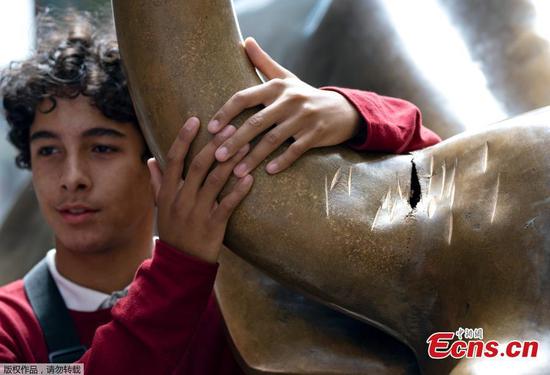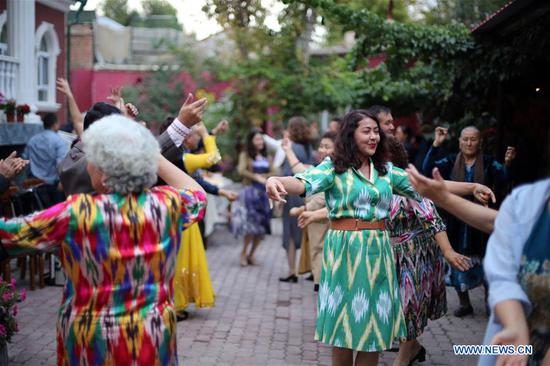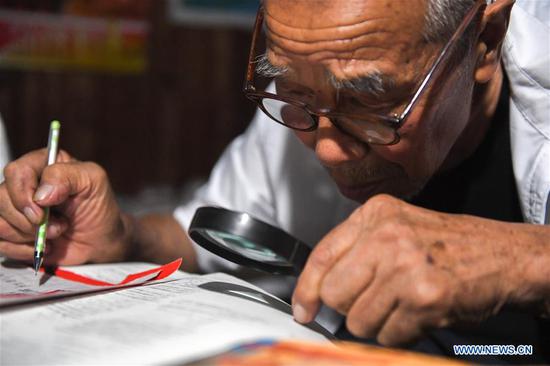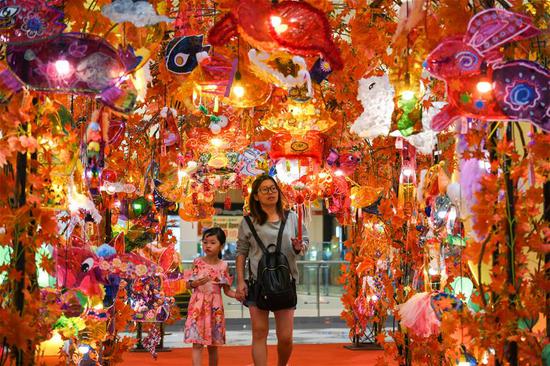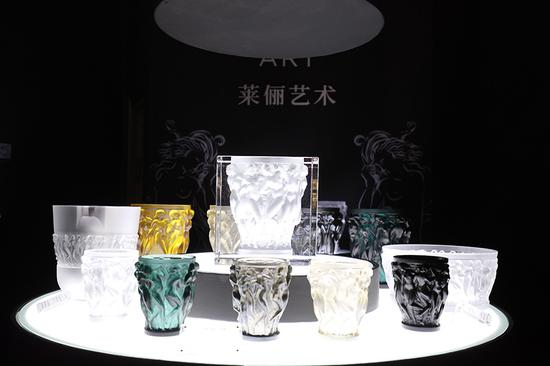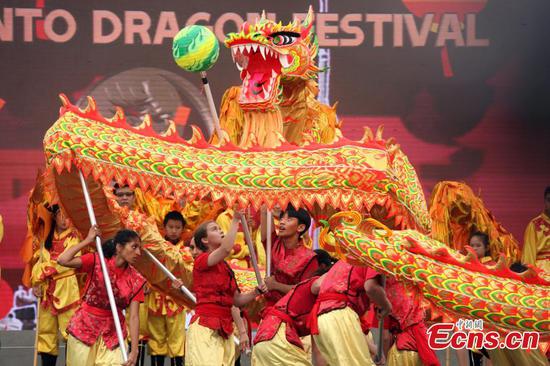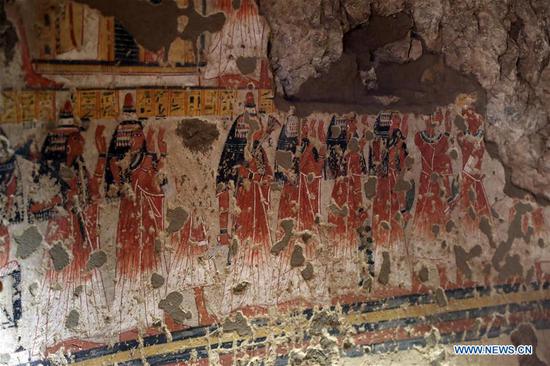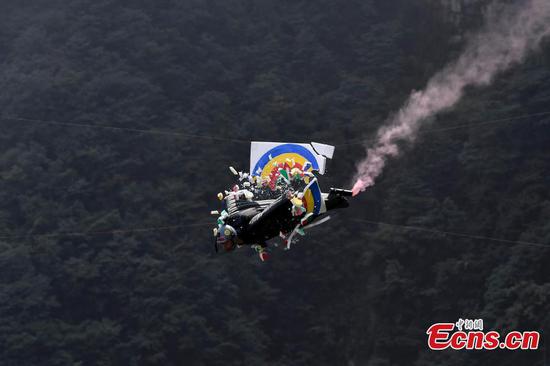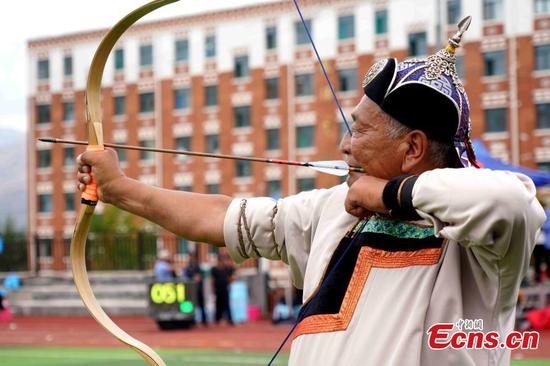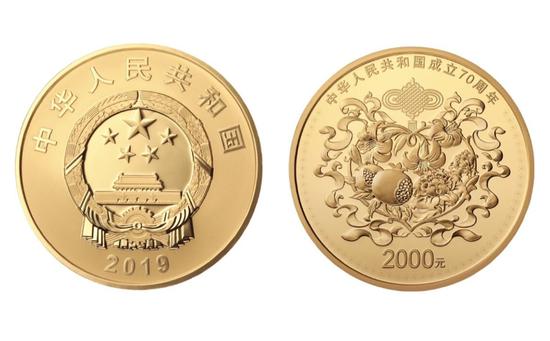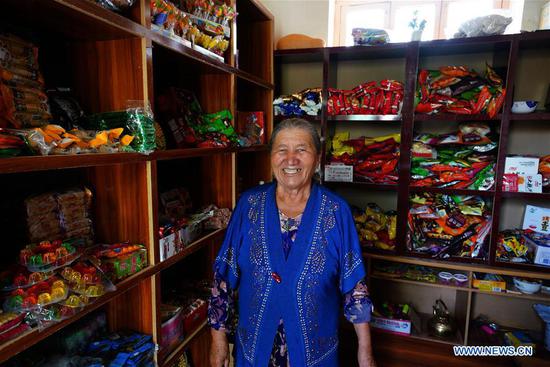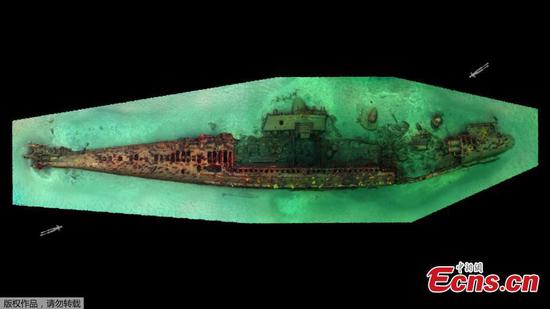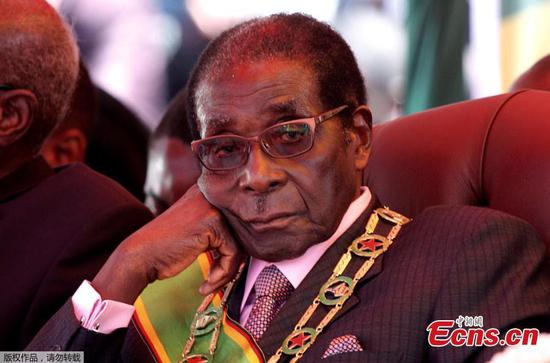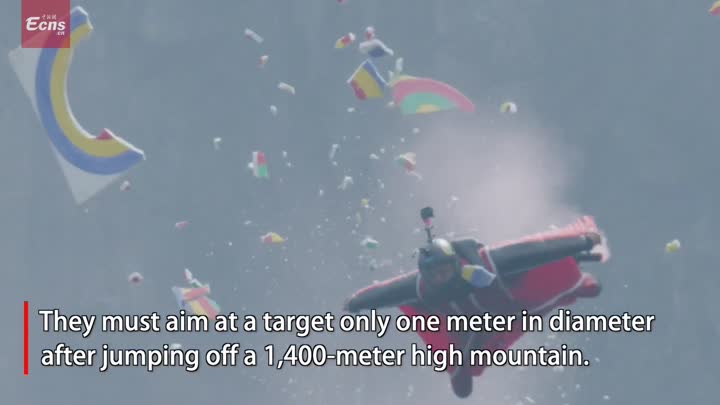
A Deer of Nine Colors
Shanghai Animation Film Studio has a proud legacy of hand-drawn movies that have proved popular with audiences of different age groups.
One work that most Chinese watch during childhood is A Deer of Nine Colors, which was co-directed by Dai Tielang and premiered in 1981.
Adapted from an artwork from the cave murals in Dunhuang, Gansu province, the film tells the story of a spiritual nine-colored deer that saves a Persian merchant from drowning in a river.
The merchant promises not to tell anyone about the deer. However, he breaks his promise and leads the king's army in hunting the animal, because the monarch's concubine wants a deerskin coat. When the merchant falls into the river again, he drowns.
A five-member creative team from Shanghai Animation Film Studio spent more than 20 days in Dunhuang gaining inspiration for the 24-minute movie. They drew about 20,000 pictures, copying the murals, and 200 of the pictures were chosen for scenes in the film, according to a report by the studio, which celebrated its 60th birthday in 2017.
The movie brought the story of the ancient cave murals to a wider audience, as well as being passed down from one generation to the next.
In June last year, the National Ballet of China premiered a production for children based on A Deer of Nine Colors.
In 1963, after designing China's first ink-wash cartoon, Baby Tadpoles Look for Their Mother, which received widespread critical acclaim, Dai designed the second such work for the Shanghai studio. Entitled Mu Di, the film centers on a shepherd boy who uses his reed pipe to find a lost buffalo.
Duan Xiaoxuan, a photographer with the studio, said: "Our rich Chinese culture provided endless creative resources. We were intrigued by ink art because it is the most distinctive expression of Chinese aesthetics."
In 1965, Dai designed one of the country's first animated films themed on an ethnic group. Heroic Little Sisters on the Grasslandis based on the true story of two sisters living in Ulanqab League in the Inner Mongolia autonomous region.
In addition to Dai, the contribution of the elder generation of animators saw the Shanghai studio reach a creative production peak from the 1960s to 1990s.
In 1979, Prince Nezha's Triumph Against Dragon King, directed by Yan Dingxian, Wang Shuchen and Xu Jingda, became the country's first widescreen color animated movie. An adaptation of a folk tale, it was the first Chinese animated movie to be screened at the 1980 Cannes Film Festival in France.
Before Shanghai Animation Film Studio was founded in 1957, the artist Wan Laiming and his three younger brothers created the 12-minute work Uproar in the Studio.
This 1925 animated film tells the story of a mischievous man made from paper messing up an artist's studio. It is considered to be the country's first animated film.
In 1940, the four brothers created Princess Iron Fan, the first Chinese animated movie with dialogue.
When the Shanghai studio was founded, the brothers were among its most important artists.
From 1961 to 1964, they created Havoc in Heaven, a two-part film based on the 16th-century novel Journey to the Westby Wu Cheng'en, putting China on the international film festivals map.









